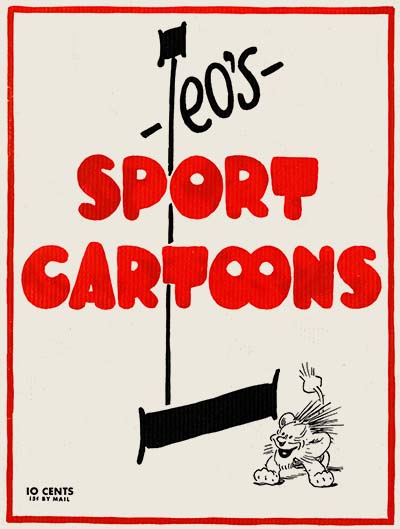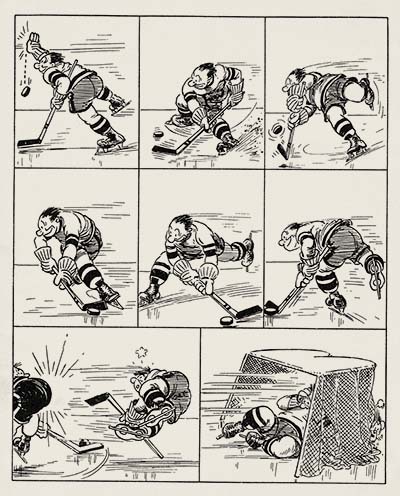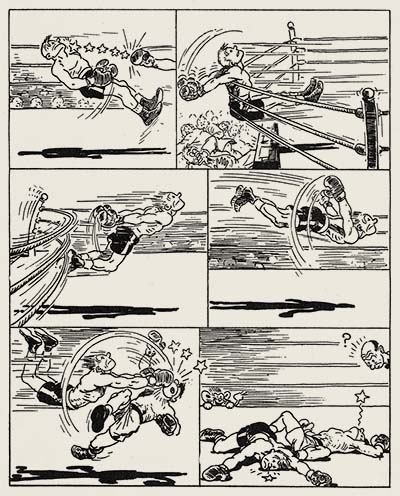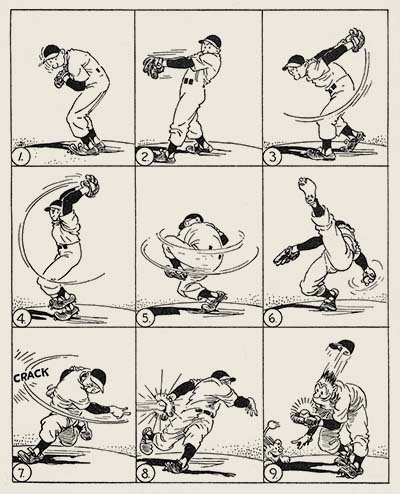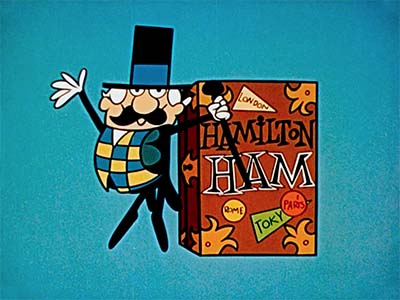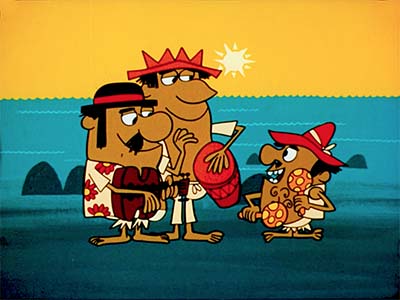People who aren’t members of Animation Resources don’t understand how comprehensive our Reference Packs are. This week, we will be posting what each section of our current RefPack looks like, starting today with the Featured section. If you are a member of Animation Resources, click on this post to go to the Members Only page. If you aren’t a member yet, today is the perfect time to join! Our current Reference Pack is our biggest yet, and General and Student Members get access to a special Bonus Archive with even more material from past Reference Packs.
What are you waiting for?![]()
JOIN TODAY!
https://animationresources.org/membership/levels/

Every other month, Animation Resources shares a new Reference Pack with its members. They consist of an e-book packed with high resolution scans and video downloads set up for still frame study. Make sure you download the Reference Pack before it’s updated. When it’s gone, it’s gone!
Leo O’Mealia: Sport Cartoons![]()
The New York Daily News (1950)
Download this article
Before the era of live TV broadcasts with instant replay, low light photography for night games, and long telephoto lenses to capture the plays close up from a long distance, sports fans depended on the newspaper for their daily sports fix. Sports columnists rattled off the play by play of the previous day’s games in great detail, and put the scores in context with complex statistics. But those were just words… the fella responsible for putting a face to the facts and figures was the sports cartoonist.
Today, only a tiny handful of sports cartoonists remain working, but in the post-war era, every paper had a great artist who filled the sports pages with caricatures, likenesses of famous figures in the news, and funny gags involving the team mascots. A few years ago, Richard Sandimir wrote in the New York Times…
"They blended the skills of a caricaturist and the mind-set of a columnist. They were entertainers and ink-stained jokesters. They were newsroom denizens and deadline artists who churned out five or six cartoons a week that received prominent display. If they possessed power, it was that they drew players, owners and managers in ways that reporters could not with their words. Sports cartoons were usually more amusing and informative than critical, which reflected the times when the sports section was the fun-and-games department."
Leo O’Mealia was discovered by Winsor McCay and, assisted the great early newspaper cartoonist Tad. He created a daily comic strip called Wedlocked, which ran for many years. During the late 1930s, he worked at DC Comics on Action Comics, Adventure Comics and Detective Comics, but he was best known as a sports cartoonist for The Rochester Herald, The Rochester Times, The Globe, and in particular, The New York Daily News. His most famous cartoon was an image of the Brooklyn Bum which was featured on the front page of The New York Daily News to celebrate the 1956 World Series, the year where the Brooklyn Dodgers beat the New York Yankees in the seventh game.
That is about all we know about O’Mealia here at Animation Resources. He didn’t get syndicated as widely as his contemporary, Willard Mullin, so he is largely forgotten today. But this little book shows what an amazing artist he was. Pay particular attention to the sequential comics illustrating a single action, like pitching a baseball or landing a punch in a prize fight. Each panel is a perfect key pose. He would have made a great animator!
PDF / 106 Pages / 184 MB Download
Two Shorts By UPA![]()
Pink And Blue Blues (1952) / Trees & Jamaica Daddy (1957)
The reputation of U.P.A. was built upon its simple, modern style. It reflected the tastes of the early 1950s by adopting elements of contemporary art and sophisticated cartooning from magazines like Esquire and The New Yorker. The films produced by the studio looked and sounded nothing like the products of any other studio at the time.
You might think that simple cartoons like these were inexpensive to produce, but that wasn’t the case. Budgets for U.P.A. cartoons were as high as those at Disney, largely because of the cost of producing the musical scores. Even though it may not be apparent to us today, the music in U.P.A. cartoons was considered avante garde at the time. It was often composed and performed by top contemporary classical and modern jazz musicians. Personally, even though I appreciate this kind of music, I find it odd to hear sounds resembling Stravinsky and Cecil Taylor in cartoons. It must have been even stranger to audiences in the early 1950s. Years later, I asked Leo Salkin, a story artist at U.P.A. about this and he said that in retrospect, he considered their choice of music to be a huge mistake. In his opinion, the highly paid jazz artists had little connection with what was happening on the screen, and just provided esoteric wallpaper to the soundtracks. Sometimes, the music you enjoy listening to at home isn’t the best music to use as a cartoon soundtrack.
U.P.A. also broke from the typical Hollywood cartoon mold by building their cartoons around human characters, not funny animals. Mr. Magoo was created by John Hubley, based on an uncle of his, as well as a dash of W.C. Fields. The original design was lumpy and somewhat grotesque, until Spencer Peel refined the design into the form we know today. Magoo is not a typical cartoon character. He isn’t goofy, cute nor lovable. In fact, he is irascible, ornery and at times, frustrating. It was difficult for the story artists to strike a balance that wasn’t off-putting. Jim Backus contributed a lot to making the character more appealing by throwing in off the cuff ad libs, much like Jack Mercer did for Popeye. Pete Burness was well suited to direct the series after Hubley moved on. He was known at the studio for his temper, earning him the nickname "Pete Hothead". His personality echoed some of Magoo’s traits.
"Pink & Blue Blues" was a fairly early entry in the series and like many U.P.A. cartoons, it features brilliant layout and color. Those elements are certainly worthy of study. But the cartoon itself is more clever than it is funny, despite building in momentum nicely towards the end. A lot of people mistake U.P.A.’s stylization as being basically flat, and the backgrounds that are designed like scenic backdrops certainly are dimensionless. But take a look at the animation of Magoo peering in the refrigerator at 2:10. His head turns with perfect solidity. Although the design was flat, the animation wasn’t.
MP4 Video File / SD / 06:17 / 128 MB Download
"Trees and Jamaica Daddy" is an odd short from the end of the Columbia era. It was an attempt to create new characters, but Ham and Hattie don’t really offer much in the way of personality. Nothing much happens in this cartoon, but the Calypso music in the second half carries it better than the ukulele music of the first half, or more abstract jazz of the early U.P.A. shorts. "Trees" isn’t very good. Even though the color by Jules Engel is very nice, the background layouts are busy to the point of being overpowering at times, and the action has no momentum. Nothing much happens in the second half either, but at least the music and animation make up for it. In "Jamaica Daddy", the focus is on Jimmy Murakami’s goofy sense of design and Fred Crippen’s simple, but fun animation. This is clearly a prototype for television animation. Fred Crippen went on to use a very similar style in his TV series Roger Ramjet. Jules Engel’s color work here is outstanding too, and it is very similar to the way he handled color in The Alvin Show at Format Films.
MP4 Video File / SD / 07:02 / 222 MB Download
Many thanks to Animation Resources Advisory Board Member Steve Stanchfield for sharing these rare films by UPA with us.
It’s Members Appreciation Time again at Animation Resources, and for the next 30 days we will be sharing reasons why you should be a member of our important project. For more information on the benefits of membership, see the Member Appreciation Page. It’s easy to join. Just click on this link and you can sign up right now online…
JOIN TODAY!
https://animationresources.org/membership/levels/
![]()
![]() Animation Resources depends on your contributions to support its projects. Even if you can’t afford to join our group right now, please click the button below to donate whatever you can afford using PayPal.
Animation Resources depends on your contributions to support its projects. Even if you can’t afford to join our group right now, please click the button below to donate whatever you can afford using PayPal.















